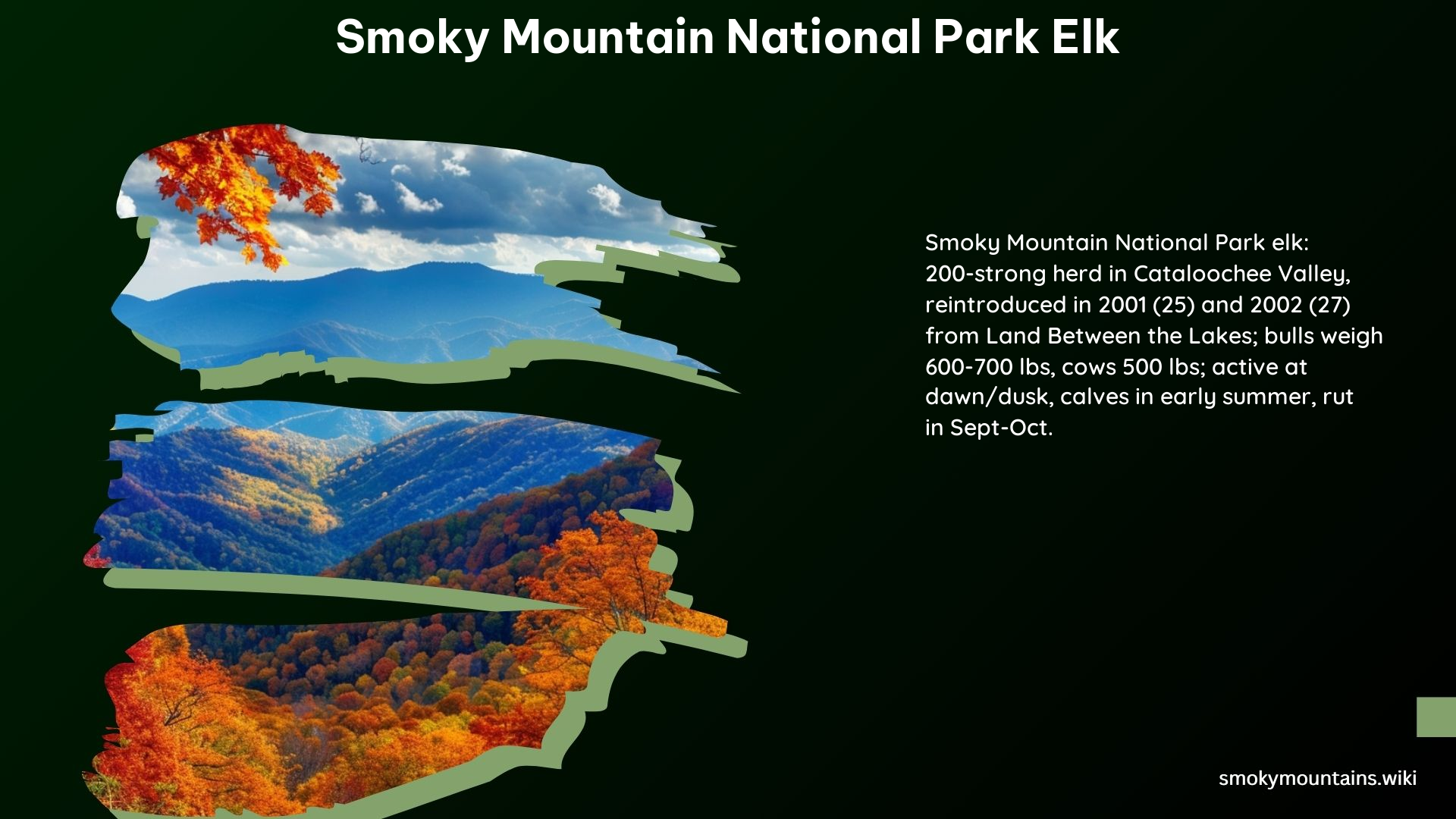The Great Smoky Mountains National Park is home to a thriving population of elk, a species that was once extinct in the region. These magnificent creatures were reintroduced to the park in the early 2000s, and their presence has become a source of wonder and excitement for visitors. In this comprehensive blog post, we’ll delve into the fascinating world of the Smoky Mountain National Park elk, exploring their history, habitat, and the best ways to catch a glimpse of these awe-inspiring animals.
Reintroduction and Population

The story of the Smoky Mountain National Park elk begins in 2001, when 25 elk were brought from the Land Between the Lakes National Recreation Area along the Tennessee-Kentucky border. A year later, an additional 27 elk were introduced to the park. Today, the current population of elk in the park is approximately 200, with the Cataloochee Valley in the southeastern part of the park serving as the stronghold for this thriving herd.
Elk Viewing Opportunities

The best times to view the Smoky Mountain National Park elk are during the early morning and late evening hours, when the animals are most active. Early summer is an ideal time to see the newborn calves, while September and October offer the chance to witness the rut, or mating season, when the male elk engage in dramatic displays and battles for the attention of the females.
When observing the elk, it’s crucial to maintain a safe distance of at least 50 yards and use binoculars or telescopes to avoid disturbing the animals. Responsible wildlife viewing is essential to ensure the well-being of the elk and to provide an enjoyable experience for all visitors.
Elk Facts and Characteristics
The Smoky Mountain National Park elk are impressive creatures, with adult males (bulls) weighing in at 600-700 pounds and females (cows) around 500 pounds. These agile animals can run at speeds of up to 40 miles per hour, a testament to their strength and athleticism.
The elk’s diet consists primarily of grass, acorns, leaves, bark, and buds from shrubs and trees, reflecting their adaptability to the diverse ecosystems of the Great Smoky Mountains. One of the most distinctive features of the male elk is their impressive antlers, which can grow up to five feet wide and are shed in early spring.
Accessing Cataloochee Valley
The Cataloochee Valley, located in the southeastern part of the Great Smoky Mountains National Park, is the primary habitat for the elk population. To reach this scenic destination, visitors can take North Carolina Exit 20 from I-40, travel 0.2 miles to Cove Creek Road, and then follow the signs for 11 miles to Cataloochee Valley.
Additional Resources
For more information about the Smoky Mountain National Park elk and the best ways to experience them, visitors can stop by the Visit NC Smokies Visitors Center at 1110 Soco Road in Maggie Valley, North Carolina, or call (800) 334-9036.
By understanding the history, habitat, and unique characteristics of the Smoky Mountain National Park elk, visitors can enhance their appreciation for these magnificent creatures and ensure a memorable and responsible wildlife viewing experience in the heart of the Great Smoky Mountains.
References
- The Story of Elk in the Great Smoky Mountains, Tennessee. (2021, September 1). Retrieved from https://smokymountains.com/park/blog/story-elk-great-smoky-mountains
- Viewing Elk in the Smoky Mountains. Retrieved from https://www.smokiesadventure.com/smokymountains/outdoors/elk-in-smoky-mountains.htm
- Where to See Elk in Great Smoky Mountains National Park. (2022, September 7). Retrieved from https://www.mysmokymountainpark.com/things-to-do/wildlife/elk/
- Elk Biology – Great Smoky Mountains National Park (U.S. National Park Service). (2023, September 5). Retrieved from https://www.nps.gov/grsm/learn/nature/elk-facts.htm
- Elk – Great Smoky Mountains National Park (U.S. National Park Service). (2023, September 5). Retrieved from https://www.nps.gov/grsm/learn/nature/elk.htm
